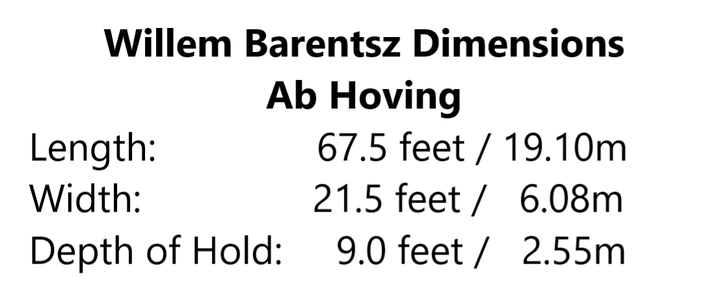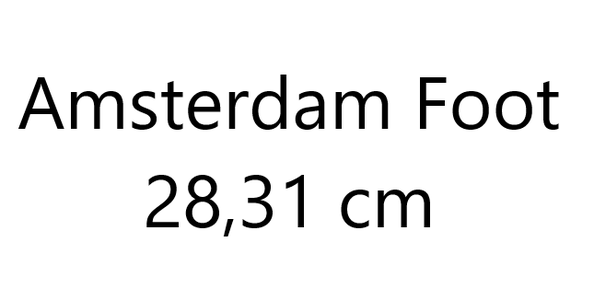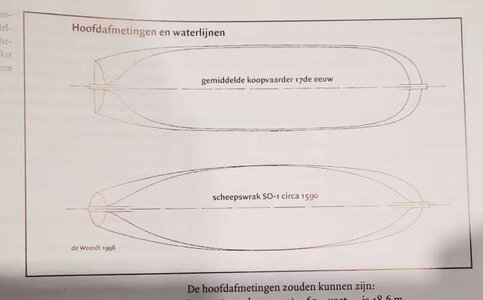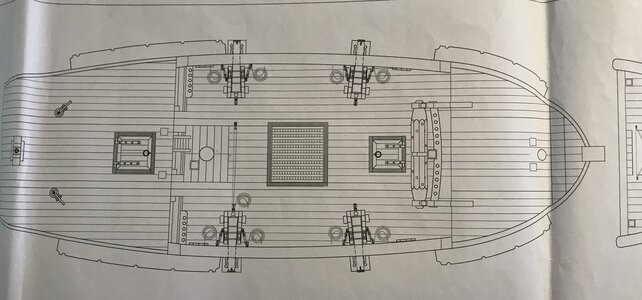- Joined
- Jan 9, 2020
- Messages
- 10,545
- Points
- 938

Not you too! My employees (@dockattner Paul) are also on about Nescafe not being real coffee.Nescafé? Not even real coffee?

 |
As a way to introduce our brass coins to the community, we will raffle off a free coin during the month of August. Follow link ABOVE for instructions for entering. |
 |
 |
The beloved Ships in Scale Magazine is back and charting a new course for 2026! Discover new skills, new techniques, and new inspirations in every issue. NOTE THAT OUR FIRST ISSUE WILL BE JAN/FEB 2026 |
 |

Not you too! My employees (@dockattner Paul) are also on about Nescafe not being real coffee.Nescafé? Not even real coffee?


That's then something Paul and I wholeheartedlyagree upon!Not you too! My employees (@dockattner Paul) are also on about Nescafe not being real coffee.
Oh no, I can see another thread researching the origin’s of coffee on the horizon. Too much caffeine guy’s.That's then something Paul and I wholeheartedlyagree upon!

Absolutely no fear of that Ron. Even though my coffee is classified as "fake", I enjoy it.Oh no, I can see another thread researching the origin’s of coffee on the horizon. Too much caffeine guy’s.


Now that you mention it...Oh no, I can see another thread researching the origin’s of coffee on the horizon. Too much caffeine guy’s.

All I can say is that I need as much coffee as I can get, because trying to decipher De Weerdt's measurements and formulae is a task that this English teacher is clearly not up to!Now that you mention it...

Either in a bar or asleep?Where are you Dutch engineers when one needs you?

 You guys have made my day. I‘m laughing so hard that I can’t drink my “Real
You guys have made my day. I‘m laughing so hard that I can’t drink my “Real  “
“ 

I am glad that atleast you are drinking real coffe.You guys have made my day. I‘m laughing so hard that I can’t drink my “Real
I am glad that you now know how to deal with the Windlass Heinrich, ( for what it is worth ) But your logic begins to pay off, and that was a very nice deliberation about the dimensions of the Willem BarentszI will attempt to address your cocerns on three fronts: Functionality / The Boats / The Painting





Hey, you are not allowed to chirp in too about my Nescafe!You guys have made my day. I‘m laughing so hard that I can’t drink my “Real
“

 Enjoy your coffee my friend - even if it is at my expense!
Enjoy your coffee my friend - even if it is at my expense!
Thank you very much my friend. I can assure you that this is a LOT of work and there are so many different thoughts and opinions. But ... at some stage you have to decide what is logical. Imagine someone had pointed out the braadspil on my model and asked me what it was and what it does. If I had mounted that behind the foremast, he would have shaken his head and asked "But, how?" And ... I would not have had an answer. Now at least behind the front canopy it makes sense and I can justify its position.I am glad that atleast you are drinking real coffe.
I am glad that you now know how to deal with the Windlass Heinrich, ( for what it is worth ) But your logic begins to pay off, and that was a very nice deliberation about the dimensions of the Willem Barentsz
Heinrich, i am not a shipswright, and i am not an engineer, so you lost me when i read this, i can follow the rest of your explanation , but unfortunatly i got lost overhere.These then are the measurements and exact formulae as drawn up by Witsen and applied in the construction of the replica by De Weerdt.
The Bow:
Thickness: 1 inch per 10 feet = thus 6.5 inches or 17 cm
Width: Calculated as 3 times the thickness = thus 19.5 inches or 51cm
Height: 18 feet thus = 5,1 m
Calculated as the sum of the depth of the hold (7.5 ft), the zeeg at the front of the ship (1.5 ft) the height between decks (6 ft) height between upper deck and railing (2.5 ft) and the railing itself (0.5 ft) The sway (zeeg) at the stem is calculated according to the formula of 2.25 inches per 10 feet of the ship’s length.
Stern:
Thickness: 6.5 inches (17 cm) The thickness of the stern is normally equal to that of the bow.
Upper Width: 9.75 inches (26 cm) Calculated as 1.5 times the thickness
Lower Width: 32.5 inches (84 cm) Calculated as 5 times the thickness
Height: 15.5 feet (4.4m)
By the way, the Duyfken - also a Dutch "jacht" also circa the same era and close in dimensions to the WB, also had its windlass behind the front opbouw

Ah, not to worry my friend. That was my Mums favorite morning coffee. I don't know what the instant coffee was that I had in my military rations, but it used to turn the inside of my canteen cup black.Enjoy your coffee my friend - even if it is at my expense!

Mijn vriend ikl neem jouw niet kwalik. Vir mij is dit ook Grieks. Basies is dit maar net Witsen se formules wat gebruikt is om zekere componente van een schip ze grootte te bepaal. Van de een onderdeel is dan weer een volgende een se mates afgelei. Al wat belangrijk is, is dat zij mates as volg was:Heinrich, i am not a shipswright, and i am not an engineer, so you lost me when i read this, i can follow the rest of your explanation , but unfortunatly i got lost overhere.
And that is exactly what i understand my friendAl wat belangrijk is, is dat zij mates as volg was:

Just love to read how they determined/derived all those dimensions.Dear Friends
Last night I posted the dimensions of the Willem Barentsz according to the research of Ab Hoving. To recap, these were his findings:
View attachment 304138
Also bear in mind the Amsterdam Foot
View attachment 304139
Now we move on to the calculations of Gerald de Weerdt, master shipwright of the Barentsz replica ship that is being constructed in Harlingen.
The Willem Barentsz presents a challenge. Whilst the theses of Witsen and Van Yk on Dutch shipbuilding in the 17th Century have been proven by archeological evidence to be factually correct, no such work exists on Dutch shipbuilding in the last quarter of the sixteenth century. Subsequently De Veer’s journal and reports by other Dutch explorers to the polar regions like (Linschoten) in which they describe their types of ships and its dimensions form an invaluable source. From their descriptions, we can see that the word “jacht” is the one most commonly used to describe the type of ship. We also know that two ships were used – one of 30 lasten and the other of 50 lasten respectively. Our choice was to reconstruct the ship on which Willem Barentsz and Jacob Heemskerk (the latter as captain) sailed. Based on the size of the crew – 15 men excluding Heemskerck and Barentsz – we can deduce that the smaller ship (based on the lasten) was the one they most likely used. In comparison to other ships of the same type and era, we can deduce that from stem to stern “our” ship would have been in the region of 65 Amsterdam feet (19 meters).
In the paintings that we have and based on the drawings of De Veer, where the two ships are sailing astern, both seem to be depicted as having the same size. That is hardly surprising as the dimensions of the two ships would only have differed by approximately 20%. For the artist, both were merely two small “jachten” of the same type. Whilst paintings of the 16th century were not always accurate, the drawings of De Veer – especially when combined with his journal – showed remarkable consistency and can therefore not be ruled out as valuable source material.
The most important conclusions we can gather from these drawings of De Veer are:
The ship had two full-length decks – the lower one which housed the cannons
The two decks follow the zeeg (sway) of the berghouten (wales).
The ship was equipped with conventional rigging, three masts, a bowsprit sans blind sail, and whilst the main -and foremasts carried one main- and one marszeil each, the mizzen mast only featured a mizzen sail and no cross sail.
Just below the gun ports there were two relatively thick and heavy wales – directly above them a narrower wale.
The high build-up at the stern probably housed a cabin of sorts.
The bow had a pronounced upwards sweep – not uncommon for the time.
In addition to the above, we also utilized the following resources in our research:
Classification and General Characteristics of ship type: The Barentsz was classified as a "jacht" and as such we know that she was classified as a fast-sailing vessel which would have been streamlined below the water level).)
Paintings and drawings of the time
The discovery of the S01 ship’s wreck which was wrecked in the Waddenzee circa 1593.
Between 1987 and 1997, an archaeological excavation of shipwreck 'Scheurrak SO1' took place in the Wadden Sea. During the archaeological investigation, parts of the ship, sails and rigging, armament, cargo and inventory (more than 6000 artifacts) were excavated, analyzed, conserved and partially documented. The large seagoing merchant ship was built around 1580. During her last voyage, she was transporting grain from the Baltic region. Finds in the wreck showed that the ship sank around 1593. The database consisted of the generated data from this research, such as the field documentation, sub-surveys of ship, rigging, cargo and inventory and various visual material such as slides, photos and drawings.
Dimensions and measurements of key components as documented by Nicolaes Witsen. (Crucial to Witsen’s work was the question of whether or not it would have applied to ships built in the 16th century as well).
Real-life experiences from those involved in the building and sailing of previously constructed replicas.
Given the lack of better or more authoritative information at hand, it was decided that Witsen’s findings would be the best basis for reconstructing the hull. According to Witsen, Dutch shipwrights never adhered to a specific formula or stuck to a certain set of rules when building a ship. Instead, there was plenty of scope for personal interpretation which inevitably resulted in variances. Archeological material and pictures/paintings/drawings had to provide the answers as to the type of variances that were typical during the era of Barentsz.
So with the background sketched, it's time for the nitty gritty.
A general consensus among researchers have always relied on a ratio of 1:4 between the width and length of a Dutch ship. Sometimes, it was slightly more, sometimes slightly less. The S01 wreck, for instance had a ratio of 1:3.7 and was thus slightly wider. As a result of the abovementioned reasons and using S01 as a starting point, a somewhat wider (by 10%) than normal hull shape was chosen. The depth of the hold was also increased by 11% over the average. According to Witsen, the depth of the hold should have been one-tenth of the overall length – thus 6.5 feet – but we decided on the increased depth to correlate with the increased width. A deeper hull would also offer the advantage of better overall stability by acting as counterweight for the high build-up at the stern of the ship.
These then are the measurements and exact formulae as drawn up by Witsen and applied in the construction of the replica by De Weerdt.
The Bow:
Thickness: 1 inch per 10 feet = thus 6.5 inches or 17 cm
Width: Calculated as 3 times the thickness = thus 19.5 inches or 51cm
Height: 18 feet thus = 5,1 m
Calculated as the sum of the depth of the hold (7.5 ft), the zeeg at the front of the ship (1.5 ft) the height between decks (6 ft) height between upper deck and railing (2.5 ft) and the railing itself (0.5 ft) The sway (zeeg) at the stem is calculated according to the formula of 2.25 inches per 10 feet of the ship’s length.
Stern:
Thickness: 6.5 inches (17 cm) The thickness of the stern is normally equal to that of the bow.
Upper Width: 9.75 inches (26 cm) Calculated as 1.5 times the thickness
Lower Width: 32.5 inches (84 cm) Calculated as 5 times the thickness
Height: 15.5 feet (4.4m)
Calculated as the sum of the depth of the hold (7.5 inches), the sway at the stern (3.75 inches) stuurlast of the keel (0.75 feet), height above deck to the hole of the rudder/whipstaff 3.5 feet)
Space between decks: 5.75 feet (1.65m) which was normal for smaller ships. Towards the bow and stern this available space would increase incrementally.
The Keel:
Thickness: 8 inches (21 cm): Calculated as 1,25 times the thickness at the stern and bow
Width: 8 inches (21 cm) the same as the thickness.
The ratio between the thickness and width of the keel varied greatly. From Witsen's writings and other diverse sources it is evident that the thickness was sometimes greater than the width and vice versa. We opted for a square keel of 21 cm which tapers to 17cm the same as the width of the bow and the stern.
With these measurements we now had the basis for the overall dimensions and form of the hull. More specific detail than this does not exist and therefore different interpretations exist within these parameters. For the Barentsz we have chosen a relatively sleek hull – not as bold as that of the S01 ship, but also decidedly rounder than the straight lines of a 17th century ship.
View attachment 304141
Compared to a 17th Century Dutch VOC ship (top drawing) and the S01 shipwreck (at the bottom) which De Weerdt used as basis, it is clear how much sleeker the hull lines of the S01 were. Ultimately these were the lines that De Weerdt adopted for his interpretation of the WB.
And when all is said and done, what are the final dimensions of De Weerdt's ship?
Overall Length: 65.0 feet (18.6 m)
Overall Width: 17.5 feet (4.95 m)
Depth of Hold: 7.5 feet (2,12 m)
So in the final analysis, De Weerdt's WB is two-and-a-half feet shorter, 4 feet narrower and 1,5 feet shallower in draft.
And with that dear friends, we have come to the end of the research on dimensions.
Please note that all information and drawings used are from the book "Het Schip van Willem Barents" by Ab Hoving and Cor Emke with contributions by Peter Sigmond and Gerald de Weerdt.

That's how English looks to us Dutchies...Ik kan het niet begrijpen. I think I understand the Greek better.
